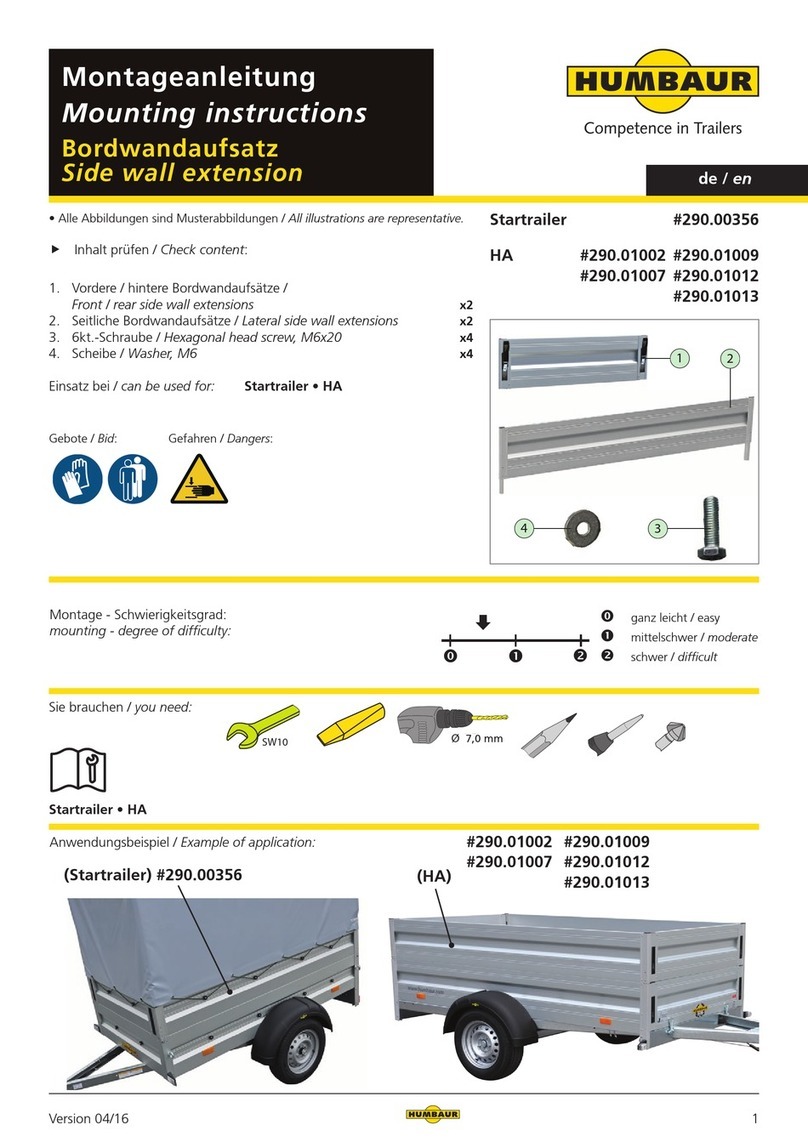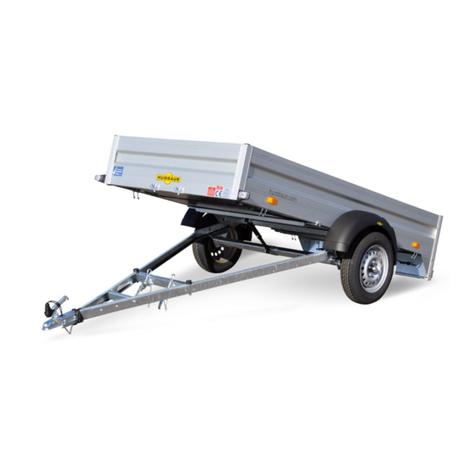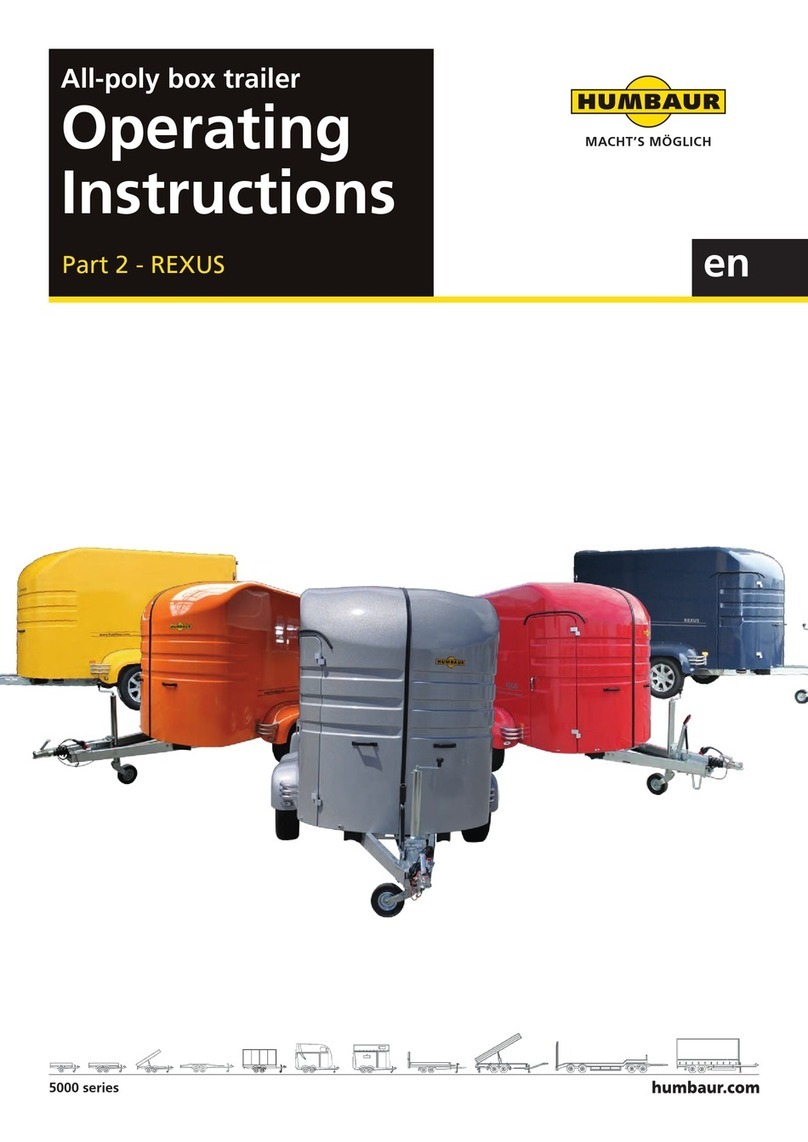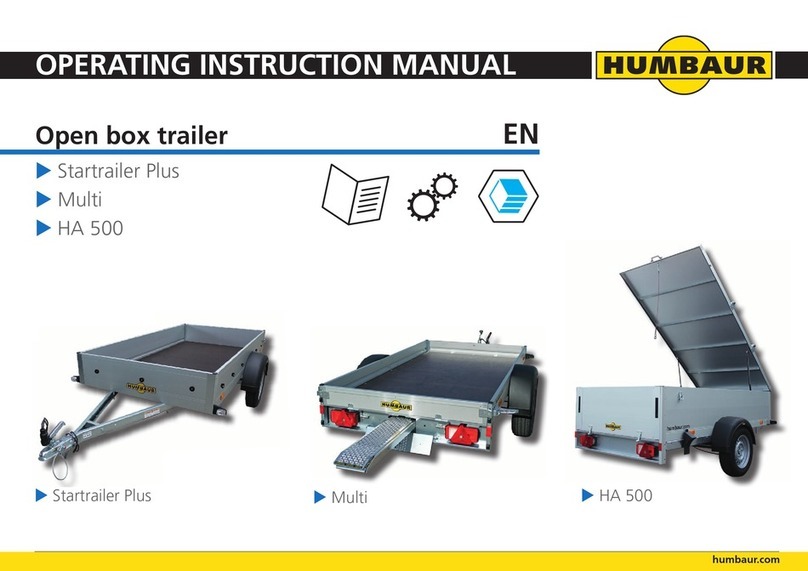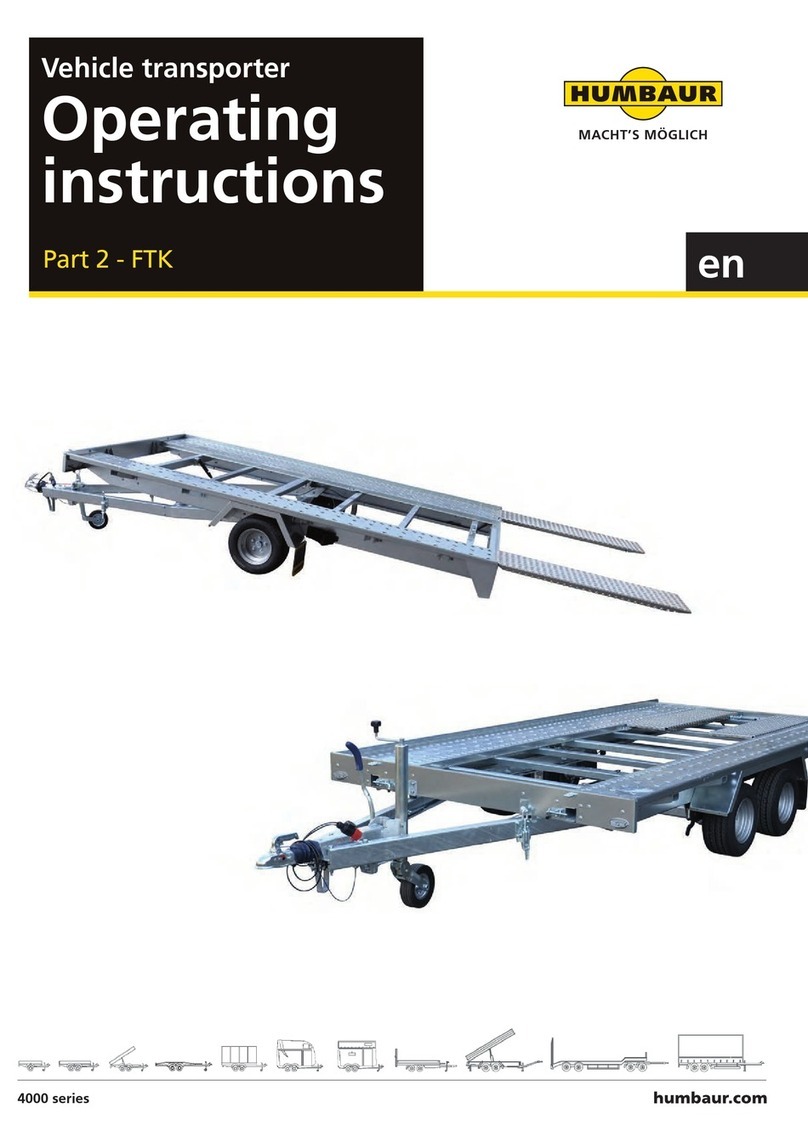
6 Version 2019/01
OI (Part 2): Steely, HA, Startrailer
2.3 HA unbraked
The HA is equipped with anodised aluminium drop sides.
The rear drop side can be folded down and removed.
The locks are recessed in the drop sides.
The 15-mm floor plate is made of multiple layers of lami-
nated wood and an anti-slip coating.
Standard (model-dependent) with foldable front drop side
and tie-down brackets.
The HA is unbraked with a gross weight of up to 750 kg.
The HA permits a wide range of applications for payloads
of up to 625 kg.
The load is secured with tie-down brackets, integrated on
the insides of the lateral drop sides.
Optional accessories:
Side wall extension, side / front + rear rail, flat cover, high
cover / frame construction, cover net, spare wheel holder /
spare wheel, jockey wheel, 2x prop stands, H-frame, steel
grid extension, wood/aluminium cover and rail with 2 lat-
eral bracings for bicycle stand.
Sample illustrations
HA unbraked - side front
HA unbraked - side rear
2.4 HA braked
The HA is equipped with anodised aluminium drop sides.
The rear drop side can be folded down and removed.
The locks are recessed in the drop sides.
The 15-mm floor plate is made of multiple layers of lami-
nated wood and an anti-slip coating.
Standard (model-dependent) with foldable front drop side
and tie-down brackets.
The HA is braked with a gross weight of up to 1,500 kg.
The HA permits a wide range of applications for payloads
of up to 1,248 kg. The HA comes with an overrun brake as
standard, including a hand brake and reverse automatic.
The load is secured with tie-down brackets, integrated on
the insides of the lateral drop sides.
Optional accessories:
Side wall extension, side / front + rear rail, flat cover, high
cover / frame construction, cover net, spare wheel holder /
spare wheel, jockey wheel, 2x prop stands, H-frame,
wheel shock absorber with 100 kph approval, steel grid
extension, wood/aluminium cover and rail with 2 lateral
bracings for bicycle stands.
Sample illustrations
HA braked - side front
HA braked - side rear



